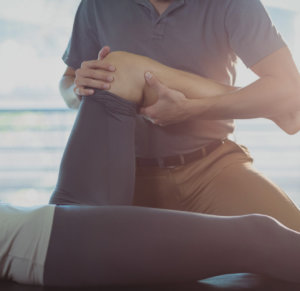By Simone Floyd
What is Complex Regional Pain Syndrome?
 Complex Regional Pain Syndrome, or CRPS, is a rare complication after an injury. Typically, this is a chronic condition that affects a limb that has been injured. It is thought that CRPS develops secondary to central or peripheral nervous system damage.
Complex Regional Pain Syndrome, or CRPS, is a rare complication after an injury. Typically, this is a chronic condition that affects a limb that has been injured. It is thought that CRPS develops secondary to central or peripheral nervous system damage.
The central nervous system consists of the brain and spinal cord, while the peripheral nervous system consists of the nerves that stem from the brain and spinal cord and connect to the rest of the body. CRPS is characterized by excessive pain, change in color and temperature, or swelling of the area involved.
At The Center for Spine Care + Mobility, you can speak to one of our NYC physical therapists about treating your complex regional pain syndrome.
Types of CRPS
There are two different types of CRPS; CRPS-I and CRPS-II. CRPS-I is characterized by pain that is not accompanied to a direct nerve trauma, while CRPS-II is characterized by pain that is associated with a known nerve trauma. In most cases, CRPS will eventually go away, but in some cases the affected area will never return to normal.
Characteristics of CRPS
The most prominent symptom of CRPS is excessive pain that is persistent and constant. Those affected will typically state it feels like burning or numbness to the area of injury or it might radiate from the area of inujry. Changes in skin texture and temperature happen due to the decrease in microcirculation from the damage of nerves that control the blood flow of the affected area.
Some common changes include; abnormal sweating, shiny skin, red skin, swelling, abnormal hair growth, poor motor control.
Treating CRPS with PT
While the affected limb is going to be painful, it is going to be important to maintain its strength and flexibility.
By keeping the limb moving there will be an increase in blood flow to the area. Additionally, it will help reverse/prevent any secondary brain changes that happen with chronic pain.
